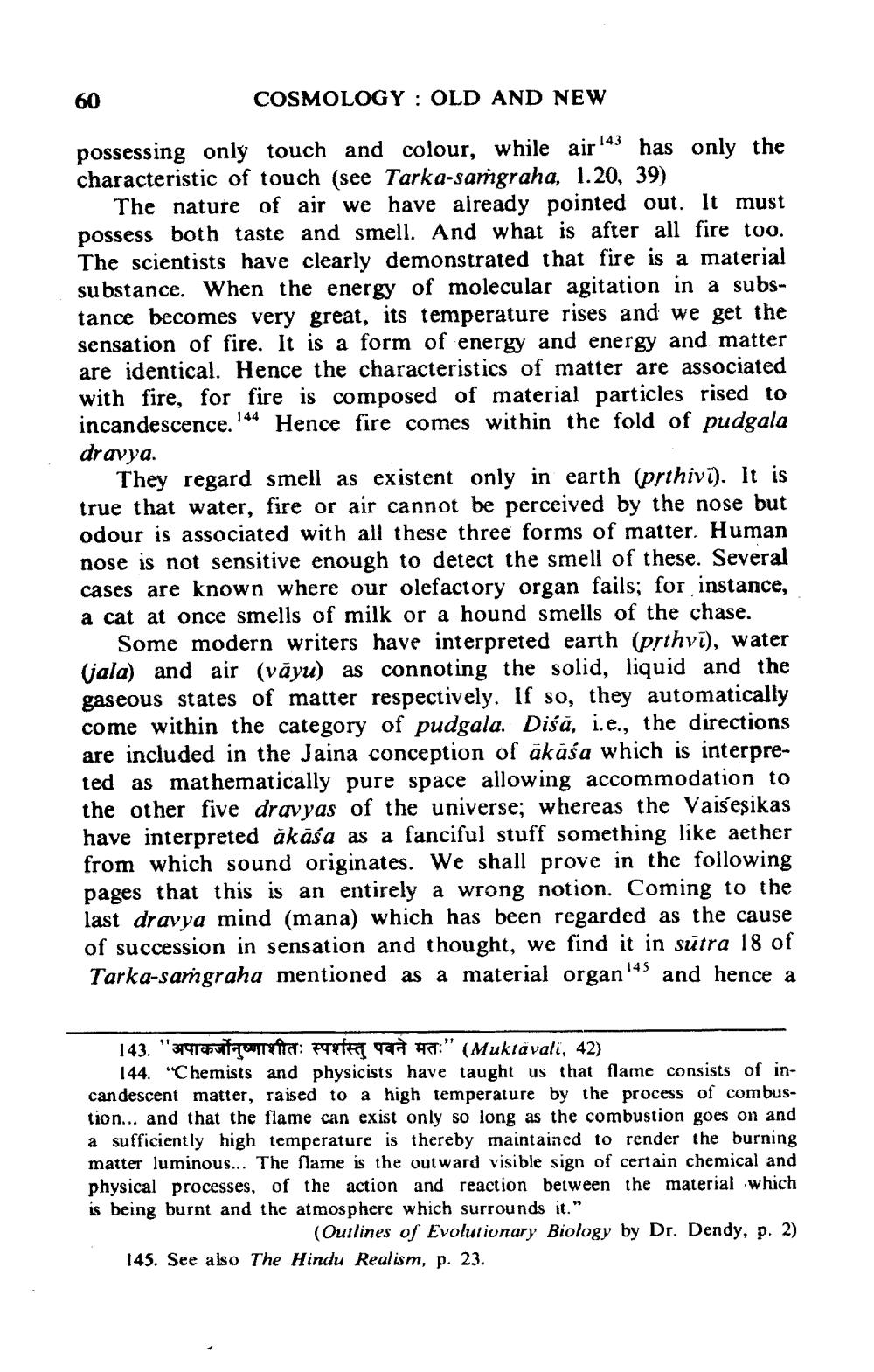________________
60
COSMOLOGY : OLD AND NEW
possessing only touch and colour, while air 143 has only the characteristic of touch (see Tarka-saṁgraha, 1.20, 39)
The nature of air we have already pointed out. It must possess both taste and smell. And what is after all fire too. The scientists have clearly demonstrated that fire is a material substance. When the energy of molecular agitation in a substance becomes very great, its temperature rises and we get the sensation of fire. It is a form of energy and energy and matter are identical. Hence the characteristics of matter are associated with fire, for fire is composed of material particles rised to incandescence. 144 Hence fire comes within the fold of pudgala dravya.
They regard smell as existent only in earth (prthivi). It is true that water, fire or air cannot be perceived by the nose but odour is associated with all these three forms of matter. Human nose is not sensitive enough to detect the smell of these. Several cases are known where our olefactory organ fails; for instance, a cat at once smells of milk or a hound smells of the chase.
Some modern writers have interpreted earth (prthvī), water (jala) and air (vāyu) as connoting the solid, liquid and the gaseous states of matter respectively. If so, they automatically come within the category of pudgala. Diśă, i.e., the directions are included in the Jaina conception of ākāśa which is interpreted as mathematically pure space allowing accommodation to the other five dravyas of the universe; whereas the Vaissesikas have interpreted åkāśa as a fanciful stuff something like aether from which sound originates. We shall prove in the following pages that this is an entirely a wrong notion. Coming to the last dravya mind (mana) which has been regarded as the cause of succession in sensation and thought, we find it in sutra 18 of Tarka-saṁgraha mentioned as a material organ '45 and hence a
143. "37470butoreitar: preth 9 " (Muktavali, 42)
144. "Chemists and physicists have taught us that flame consists of incandescent matter, raised to a high temperature by the process of combustion... and that the flame can exist only so long as the combustion goes on and a sufficiently high temperature is thereby maintained to render the burning matter luminous... The flame is the outward visible sign of certain chemical and physical processes, of the action and reaction between the material which is being burnt and the atmosphere which surrounds it."
(Outlines of Evolutionary Biology by Dr. Dendy, p. 2) 145. See also The Hindu Realism, p. 23.




